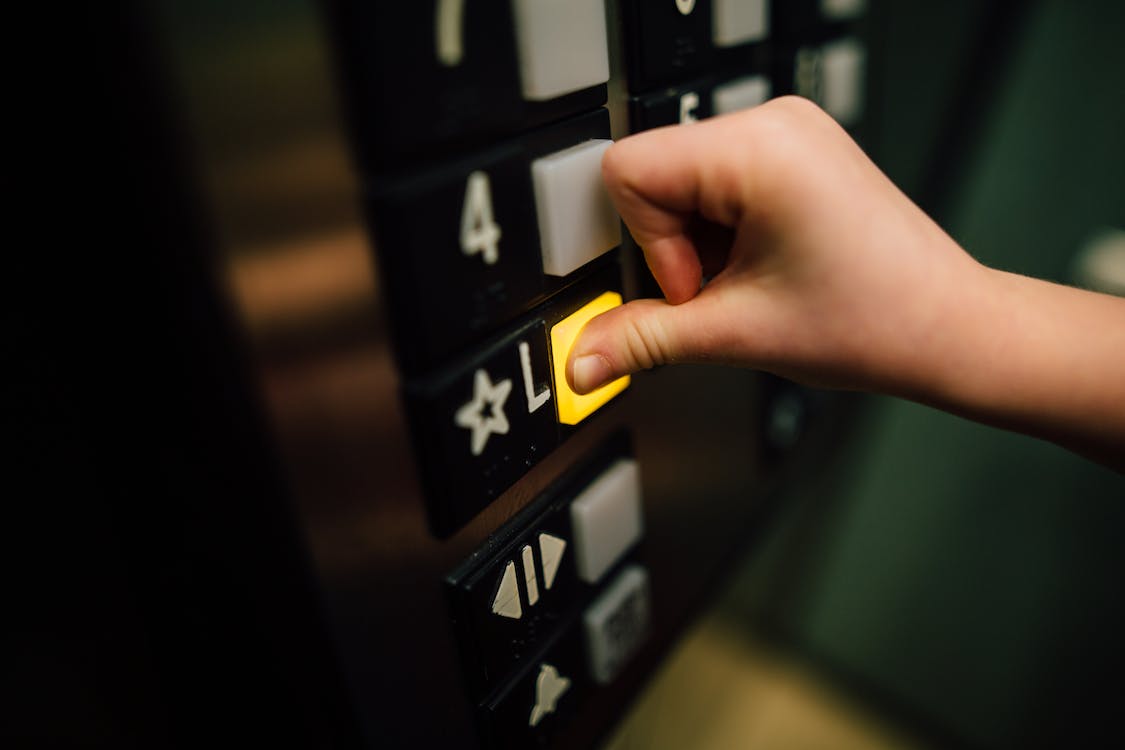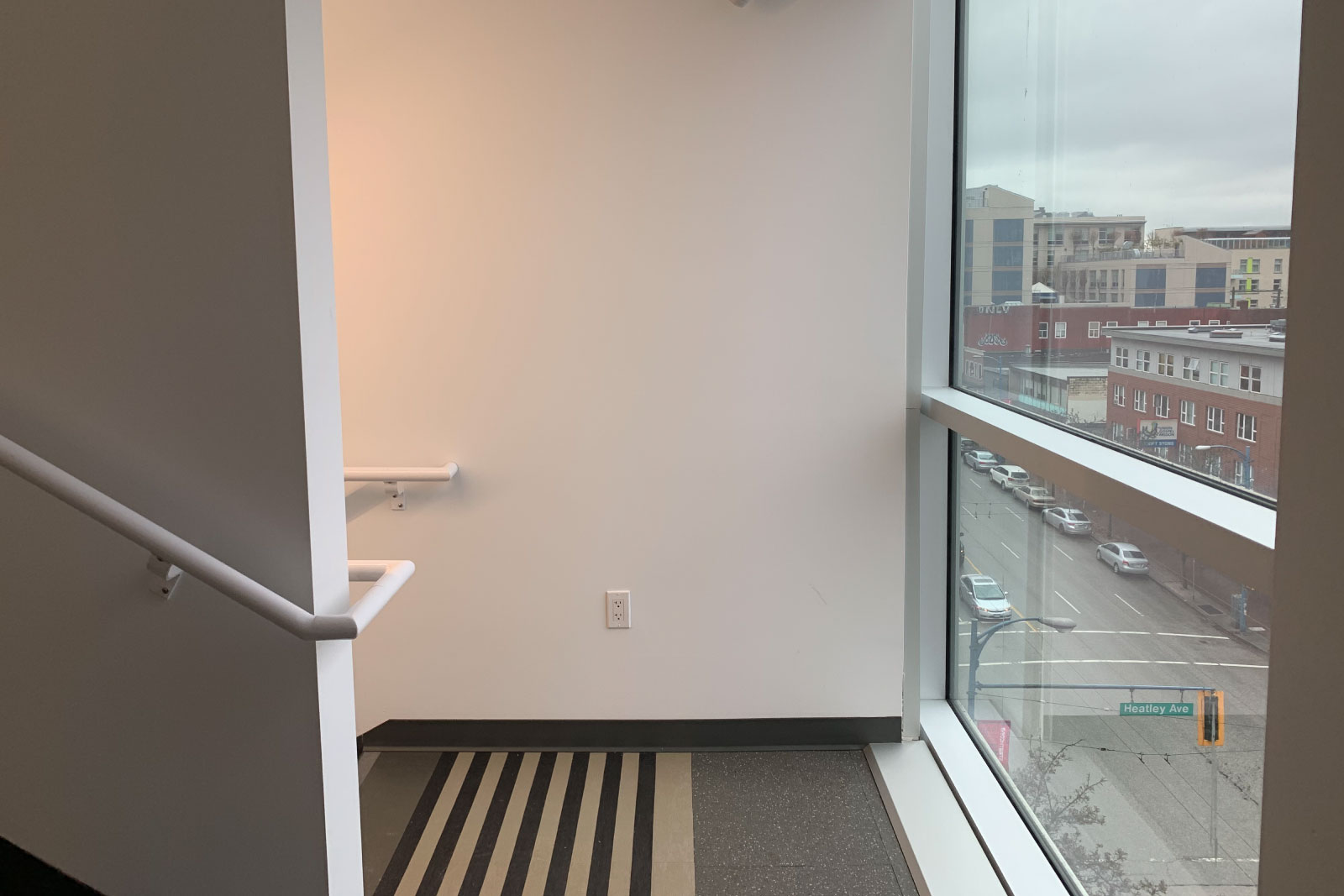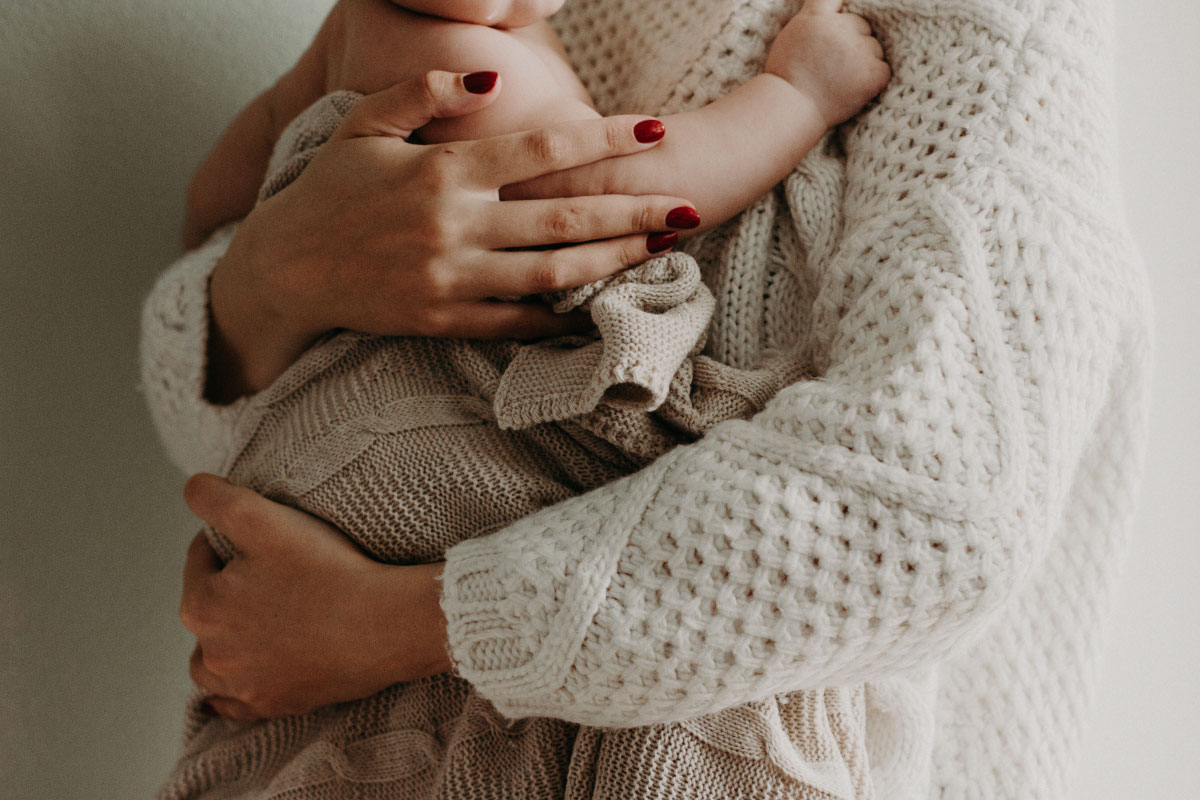Security & Sense of Safety | Convenience & Efficiency | Home-Like & Healing Environment | Physical Comfort | Community Support & Social Life
Security & Sense of Safety
“(For me) home became the last safe space on earth (while experiencing violence), instead of being a site for restoration and safety! It is so important for housing to be a safe haven.”
– Woman with Lived Experience
According to our research and engagement, security and safety is the top priority and need in the design of long-term housing for women and their families with experiences of violence and homelessness (Akbarnejad et al., 2022; Denicola et al., 2021; Vaccaro & Craig, 2020). For women and children fleeing violence, their home was often the locus of the violence. When women are rebuilding after past experiences of trauma, housing precarity often results in a compromise between affordability and safety when accessing long-term housing. Suitable long-term housing for women is a safe permanent place where residents are free from fear of abuse and where they have the freedom to choose and control who they want to welcome to their homes (Donnelly et al., 2022). Moreover, security from physical hazards is another aspect of feelings and experiences of safety for women and their children/dependents as the main residents of this housing.

Because women are often the primary caregivers to small children, care-dependent adults and older adults (Statistics Canada, 2022). Reducing the physical dangers in the space provides a safer and more accessible environment for all family members.
The strategies and related actions in this section seek to achieve security and an improved sense of safety for women and their children/dependents in their housing. These strategies provide a range and layer of security options and recommendations from where the housing is located to building entry to private units.
Design Strategies
Security System and Fixtures
Enhanced security system and fixtures add security layers to the building and provide women with a sense of security and peace of mind from possible violence.
Limiting Access
Limiting number of entrances and access points to the building and floors where women with experiences of violence live enhances their sense of safety and control. For example, women stated that going through complicated and triggering conversations with visitors (e.g., ex-partner, social worker) has to happen somewhere outside the sanctuary of their homes.
Visual Privacy
Using elements of design for visual privacy enhances control and privacy of the building and units. When implementing these actions, enhanced privacy should not lead to increased hiding spots.
Building Location
Building location can impact a woman and her children’s sense of safety as well as her access to amenities and services. It is important that affordable housing for women with children/dependants be located in safe neighbourhoods.
Lighting
Natural and artificial lighting in areas that get dark, improves clarity and wayfinding and as a result, one’s sense of safety.
Space Layout and Details
The way the spaces are arranged and where they are located in the building, and their dimensions impact feelings of safety.
Natural Surveillance / Eyes on the Street
Natural surveillance increases visibility of the areas and provides sufficient opportunities for people to observe the space and activities around them. As a result, it improves clarity and sense of control over the spaces and reduces fear of the unexpected.
Building Model
Some models and types of buildings have been perceived as safer by communities due to the size, density, orientation of units, and tenure mix.
Community Building
Women feel safer when they know they can connect with others, that they have someone to talk to and that someone is looking out for them.
Safety from Physical Hazards
Many women have small children and are the primary caregivers to care-dependant adults and older adults. It is important that they are safe from physical hazards especially in their units and building common areas.
Strategy
Action
Security System and Fixtures
Enhanced security system and fixtures add security layers to the building and provide women with a sense of security and peace of mind from possible violence.
- Unit: Door deadbolt (CMHC, 2019a; Donnelly et al., 2022).
- Unit: Door peephole (CMHC, 2019a).
- Common area: Panic buttons in common area’s hallway).
- Common area: Prominent locations such as building front facades provide the most impact for locating security cameras (Donnelly et al., 2022); Security cameras on hallways of all floors and elevators.
- Common area: Smart doorbells with video.
- Common area: Secure intercom system with door and elevator access control.
- Common area: Intercom without the unit’s numbers and residents’ names to protect women’s anonymity.
Limiting Access
Limiting number of entrances and access points to the building and floors where women with experiences of violence live enhances their sense of safety and control. For example, women stated that going through complicated and triggering conversations with visitors (e.g., ex-partner, social worker) has to happen somewhere outside the sanctuary of their homes.

- Unit: Preferably do not allocate first floor units that are adjacent to public spaces to women and children with experiences of violence.
- Common area: Allocate spaces that face and are at street level to shared indoor spaces.
- Common area: Limit the number of entrances to the building to control security. One main entrance and one emergency exit were considered as safe options.
- Common area: Allocate shared outdoor space on upper floors.
- Common area: Underground storage/storage room in the building should only be accessed by residents
- Common area: Gated parking.
- Common area: Neutral meeting space for visitor meetings (e.g., RCMP, social workers, and ex-partner) with an outside door with no access to the building.
- Common area (building exterior): Gated buildings, fenced space around building and metal gate that protects ground level units without feeling institutional (permeable gates).
- Common area: In buildings with mixed tenants, dedicate one level to women and children with no amenity or common space on that floor.
- Common area: If a multi-unit housing provides a continuum of housing options in the same building (e.g., Long-Term Housing, Transition House, and Second Stage), ensure housing types/programs are allocated in different floors/spatially divided and have different fob access for improved safety. Women with lived experiences of violence in each housing/program are in different levels of vulnerability and their safety needs and supports vary.
- Common area: Fire exit stair should only open onto ground level (locked towards other levels).
Visual Privacy
Using elements of design for visual privacy enhances control and privacy of the building and units. When implementing these actions, enhanced privacy should not lead to increased hiding spots.
- Unit: Window blinds to control privacy.
- Common area (building exterior): When retrofitting existing buildings, plant more trees (without increased hiding spots) and add fences to increase privacy of building from the surrounding neighbourhood.
- Common area: Reduce glass in the lobby for more privacy of who lives in the building.
- Common area: Entry vestibule (i.e., buffer).
- Common area: Internalize more of the glass to inner courtyards (Zinni, 2019).
Building Location
Building location can impact a woman and her children’s sense of safety as well as her access to amenities and services. It is important that affordable housing for women with children/dependants be located in safe neighbourhoods.
- Connection with neighbourhood: Housing should be located in safe areas and away from major streets.
- Connection with neighbourhood: For women living in remote and rural communities, consider housing with neighbours in close proximity (BC Society of Transition Houses, 2015).
Lighting
Natural and artificial lighting in areas that get dark, improves clarity and wayfinding and as a result, one’s sense of safety.

Figure 14: Cut-out windows and substantial light in the shared stairways of YWCA Cause We Care building
- Common area: Motion sensor lights for outdoor and indoor communal spaces (circulation spaces such as hallway) to navigate paths and doors when it is dark.
- Common area: Stairway and hallways should have substantial lighting/cut-out windows (Grabowska et al., 2021). See Figure 14.
- Common area: Appropriate lighting around and outside of the property and in the shared areas (e.g., stairways, parking lots, postbox room, garbage area).
- Common area: Vandal proof lighting outside and around the building.
Space Layout & Details
The way the spaces are arranged and where they are located in the building, and their dimensions impact feelings of safety.
- Common area: Quick route to the outside (City of Toronto, 2022).
- Common area: Wide and short corridors and hallways with clear sightlines (City of Toronto, 2022; Grabowska et al., 2021). Wide hallways feels more spacious and allows for increased sense of safety. They also provide more space for two strollers to pass by each other.
- Common area: Clearly organized car park with direct access, without long corridors or overly complex gate setups (City of Vienna, 2013, p. 88).
- Common area: Conveniently located garbage collection area, accessible from units by a short and clear-cut route (City of Vienna, 2013, p. 89).
- Common area: If the laundry machines could not be located within the units, the laundry room should be located on site in a high-traffic area (e.g., not in the basement or down the hallway), with preferably an entrance and exit door located at opposite ends of the room to ensure easy exit, if needed (CMHC, 2019a).
- Common area: Shared laundry should be located in the middle of hallways and in central location in the building.
- Common area: Ensure that any shared washrooms are gender-inclusive for gender-diverse people. Use signs for clarity and inclusivity.
Natural Surveillance / Eyes on the Street
Natural surveillance increases visibility of the areas and provides sufficient opportunities for people to observe the space and activities around them. As a result, it improves clarity and sense of control over the spaces and reduces fear of the unexpected.

- Unit and common area: Units that overlook outdoor play areas support mothers to keep an eye on their children.
- Unit and common area: Internal courtyard facing the units with access to safe children play area facilitates natural surveillance.
- Common area: Building entrances should be seen from the street and not hidden behind walls, building forms, or landscaping (Donnelly et al., 2022) Entrances that are positioned more than 2 meters inside the building or passageway reduce contact (by sight or earshot) (City of Vienna, 2013).
- Common area: Allocate space for on-site staff with interior facing windows to oversee ins and outs of the building next to the main entrance and where women can chat privately with staff if they need to.
- Common area: In buildings with both long-term housing and Transition/Second Stage House units that only has one on-site staff space, this space should be located close to the entry or at a place where it is visible and accessible to all residents/guests.
- Common area: Amenity spaces should be located close to the staff office.
- Common area: Minimize hiding and blind spots in hallways and entrances and ensure clear sightlines.
- Common area and building exterior: Outdoor parking spaces should be visible to residents/on-site staff (i.e., eyes on the streets).
- Common area: Mailroom should not be located in enclosed rooms with walls on all sides.
- Common area: Hard floor material near doors to signal that someone is near (Grabowska et al., 2021).
- Common area: Shared laundry room should have a window to the outside of the room.
- Common area: Designated shared children’s room with glass doors allows for mothers to keep an eye on their children while attending other events or meetings in the shared space.
Building Model
Some models and types of buildings have been perceived as safer by communities due to the size, density, orientation of units, and tenure mix.
- Unit and common area: Balconies that open onto an internal courtyard rather than onto a public area (note: courtyard model is more expensive in development due to more external walls).
- Unit and common area: Housing co-operatives provide a safe environment due to the cooperative management by residents.
- Unit and common area: Multiplex housing is identified as a good option for women with children, women with disabilities, and women survivors of violence due to units’ relatively direct access to the street. Floors 2 to 6 is identified as the sweet spot for perception of safety for women with experience of violence who do not feel safe enough on the ground floor (City of Toronto, 2022).
- Unit and common area: Non-segregated women/family only housing. Integrated housing was perceived as safer by some women.
- Connection to neighbourhood: Having a mixture of housing options such as Transition House, Second Stage and Long-Term Housing in close proximity to each other allows for greater sense of community and safety for women (e.g., Prince George Elizabeth Fry – My Sister’s Place). Knowing that supports are available and close-by are important for people in long-term housing.
- Connection to neighbourhood: Form of the building should not draw unnecessary attention and housing should be blended with the existing neighbourhood (Zinni, 2019).
Community Building
Women feel safer when they know they can connect with others, that have someone to talk to and that someone is looking out for them.
- Please refer to “Community Support and Social Life” Section for strategies and actions to enhance community connections through design.
Safety from Physical Hazards
Many women have small children and are primary caregiver to care-dependant adults and older adults. It is important that they are safe from physical hazards especially in their units and building common areas.

- Unit: Bars on the windows that do not feel institutional.
- Unit: Kitchen with a view into the living-room area to watch kids while doing household chores/working.
- Unit: Having the locks on the doors out of the reach of small children.
- Unit: Built-in childproofing on kitchen/bathroom cupboards drawers, etc.
- Unit: Provide lockable cupboard to store cleaning products, medication, and other hazardous materials out of reach of young children (Donnelly et al., 2022; Isthmus Group Ltd, 2018).
- Unit: Retractable built-in baby gate for kitchen.
- Unit: Built-in shelves out of reach of small children.
- Unit: Windows which open at the top are safer for children. Consider accessibility challenges for people with disabilities.
- Unit: Safe balcony (e.g., Juliet balcony for safety of windows).
- Unit: Temperature control on hot water.
- Unit: For families with small children and people with disabilities, units with all rooms on the same floor are preferable (e.g., duplex not preferred).
- Unit: If women with small children live in duplex or loft units, ensure safe stair design.
- Unit: Non-slip flooring in the bathrooms (Donnelly et al., 2022).
- Unit and common area: Decks and patio spaces allow safe spaces for children to play that can also be monitored by parents.
- Common area: Outdoor play areas should be separated from parking areas.
- Common area: When car parking occurs adjacent to communal amenity spaces, install visually permeable fencing between the two spaces (Isthmus Group Ltd, 2018).
- Common area: On-site outdoor fenced-in child play area with age-adequate playing equipment (City of Vienna, 2013, p. 89; CMHC, 2019a; Isthmus Group Ltd, 2018).
- Common area: In the elevated outdoor space, ensure high guards (non-climbable) for increased security and safety.
- Connection to neighbourhood: Priority space in front of building for pick up and drop off.

